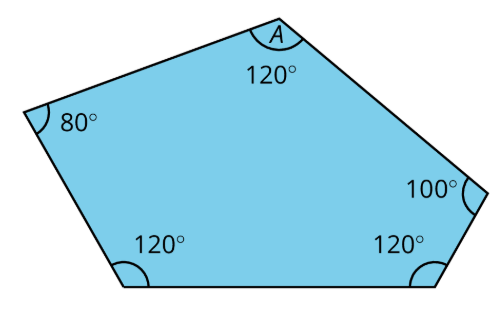9.1.3: Polígonos teselantes
- Page ID
- 118765
Lección
Hagamos teselaciones con diferentes polígonos.
Ejercicio\(\PageIndex{1}\): Triangle Tessellations
Tu profesor te asignará uno de los tres triángulos. Tu objetivo es encontrar una teselación del avión con copias del triángulo.
Ejercicio\(\PageIndex{2}\): Quadrilateral Tessellations

- ¿Se puede hacer una teselación del avión con copias del trapecio? Explique.
- Elige uno de los otros dos cuadriláteros. A continuación, gire el cuadrilátero 180 grados alrededor del punto medio de cada lado. ¿Qué notas?
- ¿Se puede hacer una teselación del avión con copias del cuadrilátero del problema anterior? Explica tu razonamiento.
Ejercicio\(\PageIndex{3}\): Pentagonal Tessellations
1. ¿Se puede tesellar el avión con copias del pentágono? Explique. Tenga en cuenta que los dos lados que forman ángulo\(A\) son congruentes.

Pausa tu trabajo aquí.
2. Toma un pentágono y gírelo 120 grados en sentido horario alrededor del vértice en ángulo\(A\), y traza el nuevo pentágono. A continuación, gire el pentágono 240 grados en sentido horario alrededor del vértice en ángulo\(A\), y trace el nuevo pentágono.
3. Explica por qué los tres pentágonos forman un círculo completo en el vértice central.
4. Explica por qué la forma que hacen los tres pentágonos es un hexágono (es decir, los lados que parecen ser rectos realmente son rectos).

